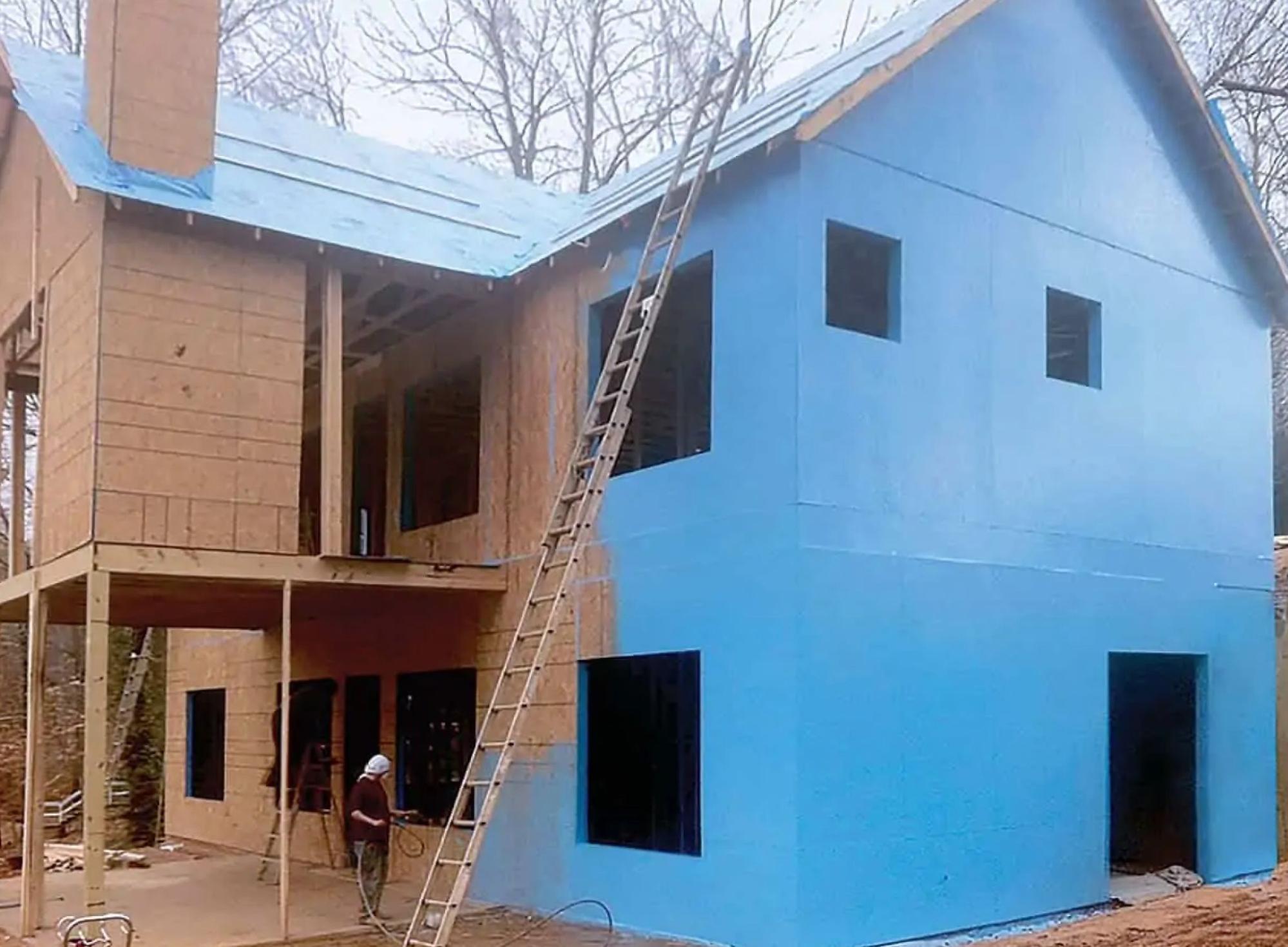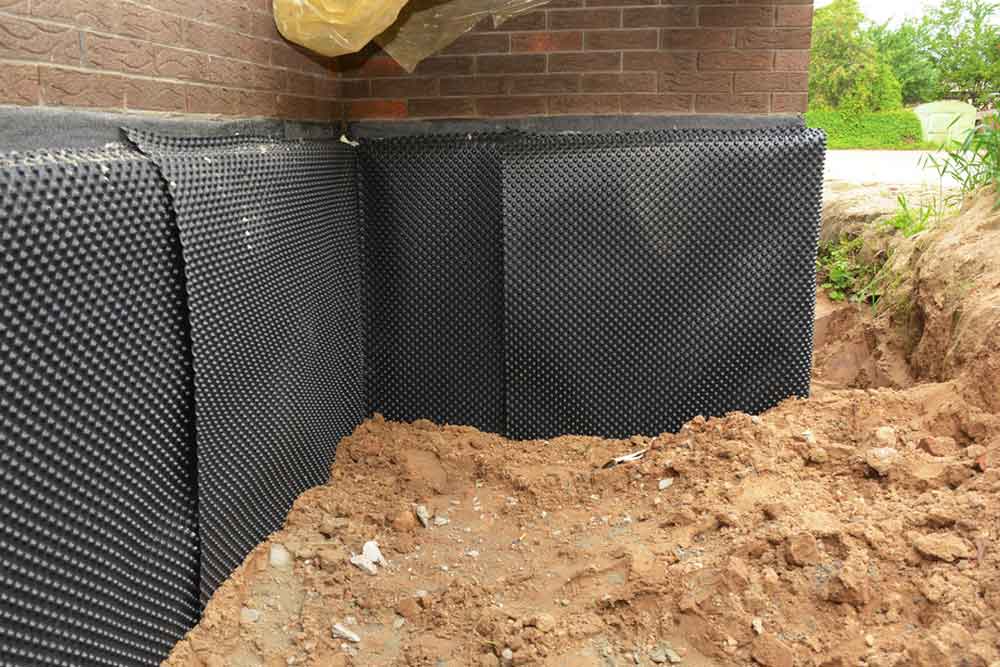Do you need a professional moisture assessment? Find out with damp proofing newcastle
Do you need a professional moisture assessment? Find out with damp proofing newcastle
Blog Article
Exploring the Various Strategies and Solutions for Effective Damp Proofing
Wetness in structures postures significant difficulties to both structural integrity and interior air high quality. Various methods and remedies have emerged to combat this prevalent problem. From standard damp-proof membrane layers to ingenious chemical therapies, each technique uses special benefits. Recognizing these alternatives is necessary for effective wetness control. Selecting the ideal option depends on specific structure conditions and demands, prompting additional expedition into the most efficient damp proofing techniques offered.
Recognizing the Sources Of Dampness
Although moisture can develop from different sources, comprehending these causes is essential for reliable removal. Commonly, wetness originates from 3 key resources: climbing wet, penetrating damp, and condensation. Rising moist takes place when groundwater takes a trip up through porous materials, such as brick or rock, commonly because of an absence of an efficient obstacle (damp specialist newcastle). Passing through moist is usually brought on by exterior elements, including roofing leaks, malfunctioning rain gutters, or damaged wall surfaces, allowing water to penetrate a residential property. Condensation, on the various other hand, arises from excess moisture in the air, frequently exacerbated by bad air flow and temperature level distinctions, resulting in water beads basing on surfaces. Recognizing these underlying problems is important, as each type of wetness calls for a customized approach for removal. Proper analysis aids in identifying the most efficient solutions, inevitably safeguarding the structural integrity of a structure and enhancing indoor air quality
Standard Damp-Proof Membrane Layers

Chemical Damp-Proofing Solutions
Chemical damp-proofing solutions supply a cutting-edge approach to stop dampness breach in structures. These approaches generally involve the application of fluid chemicals that penetrate masonry and form a barrier versus climbing damp. Commonly used chemicals consist of silanes, siloxanes, and other water-repellent representatives that react with surface area products to create a hydrophobic layer.The application procedure typically needs boring openings into the wall surfaces, infusing the chemical remedy, and enabling it to treat. This approach is specifically helpful for older frameworks where typical damp-proof membranes might be not practical. Moreover, chemical damp-proofing can be less disruptive and extra cost-effective than extensive renovation projects.While reliable, these options rely on proper application and ecological problems for peak efficiency. Normal maintenance and surveillance are important to guarantee the longevity of the damp-proofing treatment. On the whole, chemical damp-proofing represents a versatile alternative for guarding structures versus moisture-related damage
Cavity Wall Surface Building And Construction Strategies
Cavity wall building strategies provide many advantages, particularly in moisture control and energy efficiency. By including an air space between 2 layers of masonry, these wall surfaces efficiently mitigate water access while improving insulation. This mix not only secures structures from wetness however also adds to lowered energy consumption.
Advantages of Cavity Walls
When considering efficient damp proofing approaches, the advantages of dental caries wall surfaces stand out plainly. Dental caries wall surfaces include 2 different layers, creating an air space that effectively minimizes wetness infiltration. This style lessens the risk of wetness, as the outer wall surface functions as an obstacle against rain and water access. Additionally, dental caries walls improve thermal insulation, which adds to energy performance by reducing heat loss. They likewise supply audio insulation, assisting to create a quieter interior atmosphere. The air space allows for ventilation, which helps in dampness control and decreases the probability of mold and mildew development. These advantages not just boost the overall convenience of a structure yet likewise add to its durability and structural stability.
Wetness Control Approaches
Efficient moisture control approaches are vital in dental caries wall surface building to guarantee long-term protection versus moisture. One key approach entails the unification of weep openings, which facilitate water drainage from the tooth cavity, preventing accumulation. Additionally, making use of breathable membranes can assist take care of moisture levels while permitting trapped vapor to escape. Correct placement of insulation is additionally critical, as it must not obstruct drain paths. Furthermore, ensuring that the outer fallen leaves of the cavity wall are created with water-resistant products enhances overall toughness. Routine maintenance checks are necessary to determine any type of clogs or damages early, guarding the structure's honesty. Inevitably, a mix of these techniques creates a robust protection versus moisture invasion in dental caries wall surfaces.
Insulation and Power Efficiency
Insulation plays an essential function in enhancing energy effectiveness within dental caries wall surface building. By incorporating shielding products, these walls create a thermal obstacle that minimizes warm loss and decreases power consumption. Efficient insulation not only assists preserve a steady indoor temperature but likewise reduces the danger of moisture, as it avoids condensation within the wall surface dental caries. Various methods, such as the usage of stiff foam boards or mineral woollen, can be used to accomplish optimal insulation efficiency. Additionally, appropriate installation is vital to assure that spaces and voids are minimized, which can otherwise compromise power performance. Inevitably, a well-insulated tooth cavity wall adds significantly to general sustainability and lowers heating and air conditioning costs for homeowners.
Exterior Damp Proofing Approaches
External wet proofing approaches are crucial for safeguarding structures from wetness seepage. Two efficient methods include the application of waterproof membranes and the installment of French drains pipes. These solutions help alleviate water build-up and preserve the stability of buildings.
Waterproof Membrane Layer Application
While various approaches exist for preventing wetness ingress, the application of water resistant membranes stays a very efficient outside moist proofing method. These membrane layers are normally made from products such as polyethylene, rubber, or modified bitumen, offering a durable obstacle against water infiltration. The installation process includes applying the membrane to the exterior surface areas of wall surfaces or foundations, guaranteeing full protection to prevent leaks. Correct adhesion and sealing at joints are vital to taking full advantage of performance. Water resistant membrane layers can be applied in numerous types, including fluid coverings and sheet membrane layers, permitting versatility based on the certain needs of the framework. This technique not just protects structures from moisture but additionally improves their durability and structural honesty.
French Drainpipe Setup
One reliable approach for taking care of groundwater and protecting against moisture accumulation around a building's foundation is the setup of a French drain. This drainage system contains a trench full of crushed rock and a perforated pipe that reroutes surface area water away from the foundation. Proper installation requires mindful preparation, guaranteeing that the drainpipe inclines away from the structure to assist in suitable water flow. In addition, the location of the drain is crucial; it needs to be positioned in locations vulnerable to merging or excess wetness. Routine upkeep, including cleaning debris from the crushed rock and making certain the pipe read more stays unhampered, is essential for lasting effectiveness. Ultimately, a well-installed French drain can considerably lower the threat of water-related concerns in structures and cellars.
Interior Waterproofing Approaches
Inside waterproofing strategies are vital for securing a building's inside from moisture infiltration and possible water damage. These approaches typically entail the application of customized products and techniques created to produce a dampness barrier within the structure. One usual method is the use of water resistant layers or sealers on wall surfaces and floors, which prevent wetness from permeating surfaces.Additionally, setting up indoor drainage systems, such as sump pumps, can efficiently handle water build-up in basements and crawl areas. One more method includes the usage of vapor barriers, which are installed to prevent wetness activity from the ground into living spaces.Moreover, addressing any type of fractures or voids in walls or structures with suitable sealers guarantees a thorough protection versus water intrusion. By executing these interior waterproofing techniques, home owners can considerably lower the danger of mold growth, architectural damages, and various other moisture-related concerns. Proper execution of these methods is necessary for lasting protection and building integrity.
Regular Upkeep and Assessment Practices
Normal upkeep and inspection practices are essential for ensuring the long-term effectiveness of moist proofing services in any structure. Regular checks allow residential property owners to identify early indicators of moisture invasion, such as peeling paint, mold and mildew development, and moldy smells. These indicators can signal underlying issues that need instant attention.Inspections need to be carried out a minimum of each year, focusing on at risk areas like cellars, creep areas, and exterior wall surfaces. Throughout these assessments, property owners should take a look at sealants, drain systems, and ventilation to validate they work correctly.Additionally, maintaining rain gutters and downspouts is necessary, as clogged up systems can bring about water buildup near the foundation. Implementing a regular maintenance schedule, in addition to timely fixings, can considerably expand the lifespan of damp proofing actions and safeguard the structural honesty of the structure. Positive actions ultimately add to the total health and wellness of the living setting.
Often Asked Questions
How Long Does Damp Proofing Normally Last?
The period of moist proofing performance varies, normally lasting in between 20 to half a century. Factors such as application high quality, ecological problems, and maintenance methods substantially affect the durability of the wet proofing treatment.

Can I Damp Evidence My Home Myself?
The specific considered the feasibility of do it yourself damp proofing. With appropriate research study and the best materials, it is possible. They also identified the value of specialist assistance to ensure lasting performance and prevent future problems.
What Are the Indicators of Ineffective Damp Proofing?
Signs of ineffective moist proofing include consistent mildewy smells, visible mold and mildew development, peeling off paint, moist patches on wall surfaces, and wood decay - damp specialist newcastle. Property owners should resolve these problems promptly to stop more damage and health and wellness problems
Does Damp Proofing Affect Indoor Air Top Quality?

Exactly How Much Does Professional Damp Proofing Expense?
Expert damp proofing expenses vary significantly, usually ranging from $1,000 to $5,000 depending upon the property's size, the degree of the moist problem, and picked methods. Each situation requires a customized evaluation for accurate pricing. Frequently, wetness originates from three main resources: rising moist, passing through damp, and condensation. When considering effective moist proofing techniques, the advantages of dental caries wall surfaces stand out prominently. External damp proofing methods are vital for securing frameworks from moisture infiltration. While numerous techniques exist for stopping wetness ingress, the application of water-proof membrane layers remains a very effective outside wet proofing strategy. Signs of inadequate moist proofing consist of consistent moldy smells, visible mold development, peeling paint, moist spots on wall surfaces, and timber decay.
Report this page